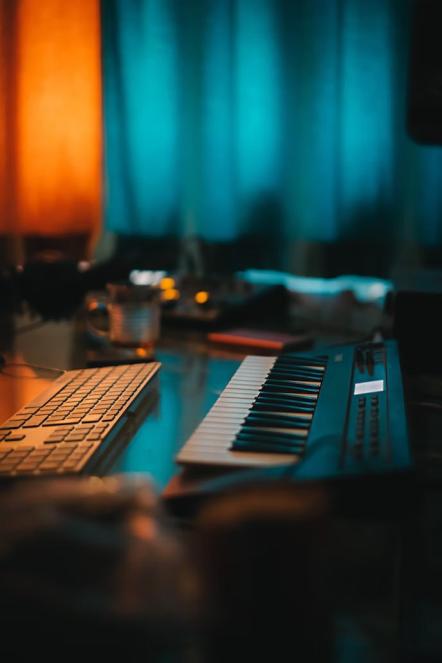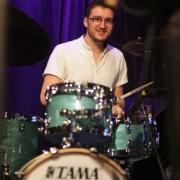New York, NY (Top40 Charts) Not since music moved from mono to stereo has anything been this immersive - By
David Ehninnger, ATR Studios
I have a friend that lost most of his hearing in his left ear when he was little. He still became a musician and has played with partial hearing for over 40 years. When he sat in the center chair in my studio and I played examples of Dolby Atmos ready songs, it was emotional. For the first time in his life he was hearing the music like he was supposed to hear it. Being immersed in the middle of the song somehow compensated for his hearing loss. He almost cried. Recording Artists pay close attention, this opinion is for you. Dolby Atmos is going to revolutionize the way we listen to music.
I have made a nice career out of understanding computer technology trends and helping large corporations understand the impact and importance of those changes; how to benefit from and embrace new technology. I combined 40 years of expertise in computer technology with my passion for music when I opened my studio in 2015. My vision has been to advance the quality of music recordings. This vision was and continues to be something that I have been chasing for 20 years, a real labor of love. As I became more knowledgeable of the music recording industry, it was only natural for me to notice how technological advances tended to disrupt the recording industry. Probably as much as any industry I have ever worked in changes in technology drive the consumer market for music. One item I that have noticed about technology is when something changes it never comes well planned and organized. Instead, the changes tend to be slow and messy. For example, it takes time for related technology to integrate, for people to learn, and for the work processes to adjust to the new products. Only then is there a chance these advancements will become mainstream and commercially viable. Often the new technology is very expensive, and one has to wait to see if it is going to be accepted by the consumers. Sometimes it's not adopted and fails to gain mass acceptance.
The music industry is a good example of how technology can disrupt an industry and, in some cases, fail. What I noticed about the music industry is for something to become accepted, it has to be more than just an advancement in recording techniques or audio quality. The advancements have to hit home, they must be mobile for instance, the technology has to be easily accessible and be embraced by the public. When the new advancement is accompanied by widespread popularity, a commercial boom is soon to follow. This has been the case since music was first heard over the radio through a phonograph recording of "Ombra mai fu Largo" on Christmas Eve 1906. Although the technology was available, the big boon for the music industry arrived much later not until the 1950's when car radios became affordable and AM radio stations sprang up everywhere. There was a large demand for music to be played over the radio waves. People loved it because they could listen to the music they loved on the go. Soon affordable handheld and portable transistor radios would follow and the golden age of radio was in full swing. The recording industry was booming and recording artists and record companies could not deliver enough music to meet the demand. Then came another advancement in the recording industry followed by an advancement in the playback technology.
Stereo recordings were invented followed by FM radio stations. Suddenly music could be heard in two dimensions.
The concept of
Stereo was invented in the late 30's and stereo music recordings were available in the late 50's. At this point in time the public was skeptical and the cost to own a home stereo was high. It wasn't until FM radio came along that the format took off. When auto manufactures began to offer Car stereos, the stereo format really took off. And boy did it take off, soon everyone had a home stereo system. This was the platinum age of radio. All forms of music were being recorded and played on the FM radio stations. I vividly remember when 8 track tapes came out, I was so happy. You could finally take your music, the music you wanted to listen to, with you. I remember Christmas 1970 when my brother bought me a Three Dog Night 8 track tape. We would ride around in his car and I would belt out "Joy to the World, all the boys and girls"… and what a joy it was. Cassette tapes would soon follow and for the first time we could make our own mix tape, again taking our own music with us in car stereos and eventually play them on boom boxes and The Walkman. This was the first time I saw the word Dolby. I didn't know what Dolby did, but I knew when you pushed the Dolby button the cassette tape sounded much better. I was a fan.
The pace of change in the music industry and the disruptions have only increased. Over the last 30 years the impact to the market and speed of change seems to arrive more often, but the changes also generate opportunities for those that embrace the change. 52nd street by Bill Joel was released in 1982 on compact disc, and the digital age of music began. Once again it took some time for public acceptance of this new format but once CD players were available in home systems, car stereos, and the Walkman, CD's took over. To this day you will find people that say their vinyl albums sound better, and perhaps they do, but what digital did for music was make it even more portable, more accessible, more available.
Digital music led to Apple to release their IPOD, another important advancement in the mobility of music. Now you could download just the songs you wanted and take your music with you anywhere you wanted to go. Network bandwidth and improved wi-fi led to music streaming and now streaming has become the way most people listen to music. We are at a point in time where people hardly buy music anymore. When was the last time you bought a Vinal record, a CD, much less a cassette or 8 track tape? Yet all of these were important advancements in the accessibility and portability of music. Now immersive audio is at the brink of acceptance and has already started to create another disruption of the industry.
Once again, Apple has led the way with their release of spatial audio on Apple
Music and by doing so they woke the giants of the movie industry and the pioneers of immersive audio Sony and Dolby up. If you have been to the movies since 2012 you were likely to have heard Dolby Atmos in the movie theaters. This is the technology that allows the allusion of jet airplanes flying overhead, and the sound of rockets ships blasting past you as the low frequencies immerse you in the movie. Now that experience is available in music. Much like the technologies I have been writing about, it has been around for a while, but the acceptance and the mobility part are happening now. If you own an Android phone, chances are you already have Dolby Atmos on your phone and don't even know it. Most newer home theaters have Atmos built in, and there are many affordable high quality sound bars that are coming Atmos ready. These are popular with the home movie crowd but they also work for music. Apple realized that most people are listening to music by streaming it through their phones to headphones and they capitalized on biaural headphone technology being used in PC gaming systems for music. And most recently several major car manufacturers; Tesla, Volvo, Mercedes have announced Dolby Atmos car systems are coming soon. So the portability, and mobility of immersive audio is on its way and coming to more places than just theaters. This is the next disruptions in the music industry which brings me back to the start of my article. The case for immersive audio. It is the actual experience that will change everything. Because for the first time, you feel like you are in the band, on the stage, immersed in the music. Think of being in the center of a music bubble, surrounded by the song. I am experiencing the same type of emotional reaction from anyone that sits in the center chair in my studio. They are hearing things in songs they have never heard before. They are talking about the clarity and the different parts; they feel like they are part of the music. And this is the case for Atmos or any immersive audio format. This is what you always wanted for your music - to be presented in a format that allows the listener to feel they are a part of the music.
The time is now, are you ready?
David Ehninnger is a seasoned technology expert that researches and recommends solutions for major corporations. His life long love of music drove his curiosity to research and then finally open ATR Studio in Katy Texas. A successful presence that works with both aspiring and well established artists.
To learn more -
ATR Studios. Across The Road , LLC. acrosstheroadllc.com
[email protected]. 281 804 5210. 




















